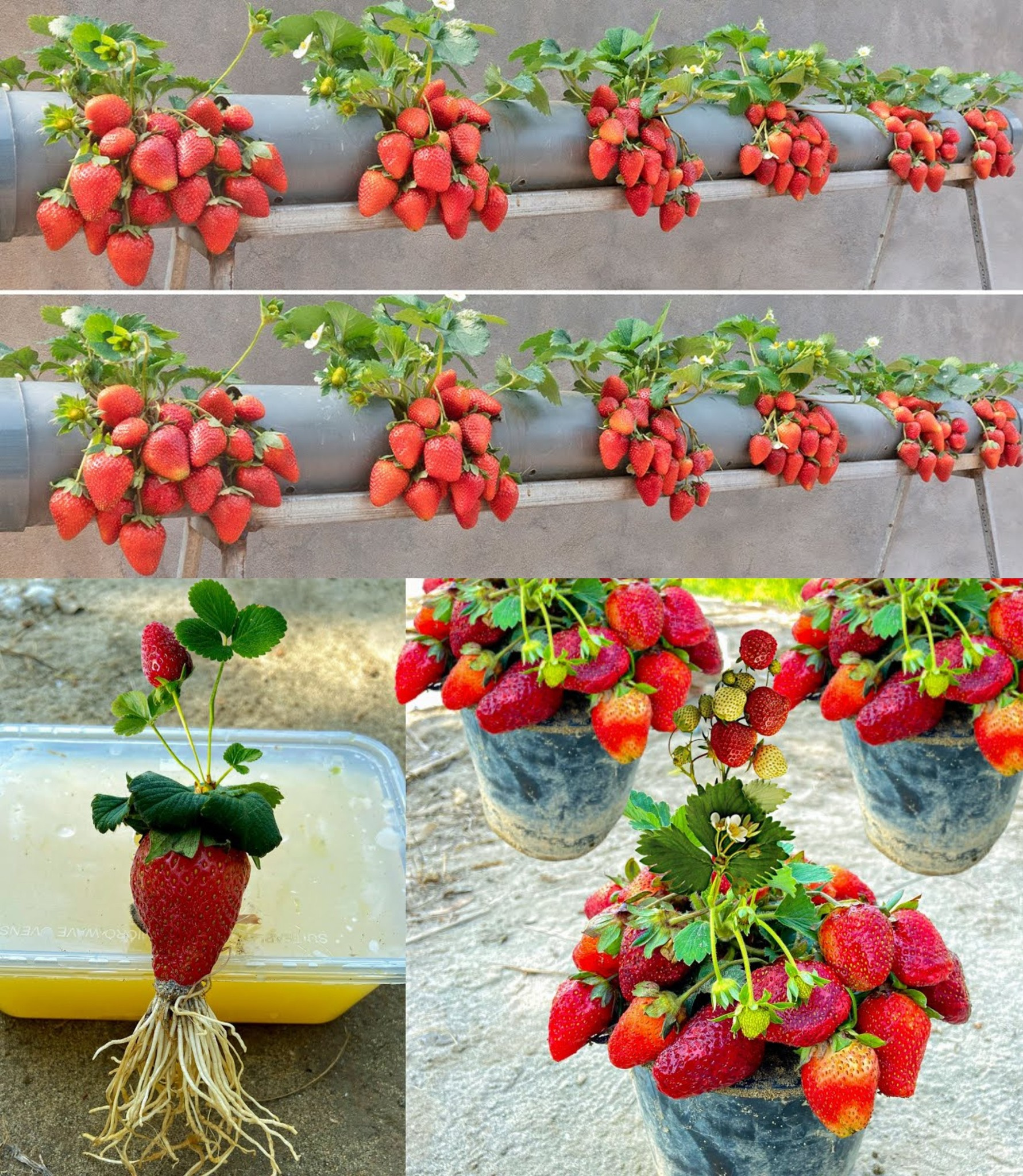
Growing strawberries at home can be a delightful and rewarding endeavor. Here’s a comprehensive guide to help you cultivate a successful strawberry patch:
Choosing Strawberry Varieties
- June-bearing: Produce a large, concentrated crop in late spring to early summer. Ideal for preserving and large harvests.
- Everbearing: Produce two to three harvests per season (spring, summer, and fall).
- Day-neutral: Produce fruit continuously throughout the growing season, from spring to fall.
Preparing to Plant
- Location: Choose a sunny spot that receives at least 6-8 hours of direct sunlight daily.
- Soil: Strawberries prefer well-draining, sandy loam soil with a pH between 5.5 and 6.5. Enrich the soil with compost or well-rotted manure.
- Raised Beds or Containers: Raised beds or containers with good drainage are excellent options, especially if you have poor garden soil or limited space.
Planting Strawberries
- Timing: Plant strawberries in early spring, as soon as the soil is workable. In warmer climates, fall planting is also an option.
- Spacing: Space plants about 18 inches apart in rows that are 3-4 feet apart to allow for runners and good air circulation.
- Planting Depth: Plant strawberries so that the crown (the point where the leaves meet the roots) is at soil level. Do not bury the crown.
Caring for Strawberry Plants
- Watering: Keep the soil consistently moist, especially during flowering and fruiting. Water early in the day to allow foliage to dry and prevent disease.
- Mulching: Apply mulch around the plants to retain moisture, suppress weeds, and keep fruit clean. Straw, pine needles, or black plastic mulch works well.
- Fertilizing: Use a balanced fertilizer at planting time. Side-dress with compost or a balanced fertilizer after the first harvest for everbearing and day-neutral varieties.
Managing Runners and Pruning
- Runners: For June-bearing strawberries, remove runners to focus energy on producing larger berries. For everbearing and day-neutral, you can allow some runners to root for a continuous harvest.
- Pruning: Remove old leaves and any dead or diseased foliage to improve air circulation and reduce the risk of pests and diseases.
Protecting Your Strawberries
- Pest Control: Use organic methods to control pests like aphids, slugs, and birds. Netting, row covers, and organic insecticides can help protect your crop.
- Disease Prevention: Rotate your strawberry patch every three years to reduce the risk of soil-borne diseases. Ensure good air circulation to prevent fungal infections.
Harvesting Strawberries
- Ripeness: Pick strawberries when they are fully red and ripe for the best flavor. Harvest every two to three days during the peak season.
- Handling: Handle berries gently to avoid bruising. Use them fresh, or store them in the refrigerator for up to a week.
Overwintering Strawberries
- Mulch: In colder climates, cover strawberry plants with a thick layer of straw mulch in late fall to protect them from freezing temperatures.
- Remove Mulch: In early spring, gradually remove the mulch as temperatures warm up and new growth begins.
Growing Strawberries in Containers
- Container Choice: Use a large container or hanging basket with good drainage. A container at least 12 inches deep and wide is ideal.
- Soil Mix: Fill the container with a high-quality potting mix enriched with compost.
- Watering: Containers dry out more quickly than garden beds, so water frequently to keep the soil consistently moist.
By following these steps, you can enjoy a bountiful harvest of fresh, homegrown strawberries. Happy gardening!
